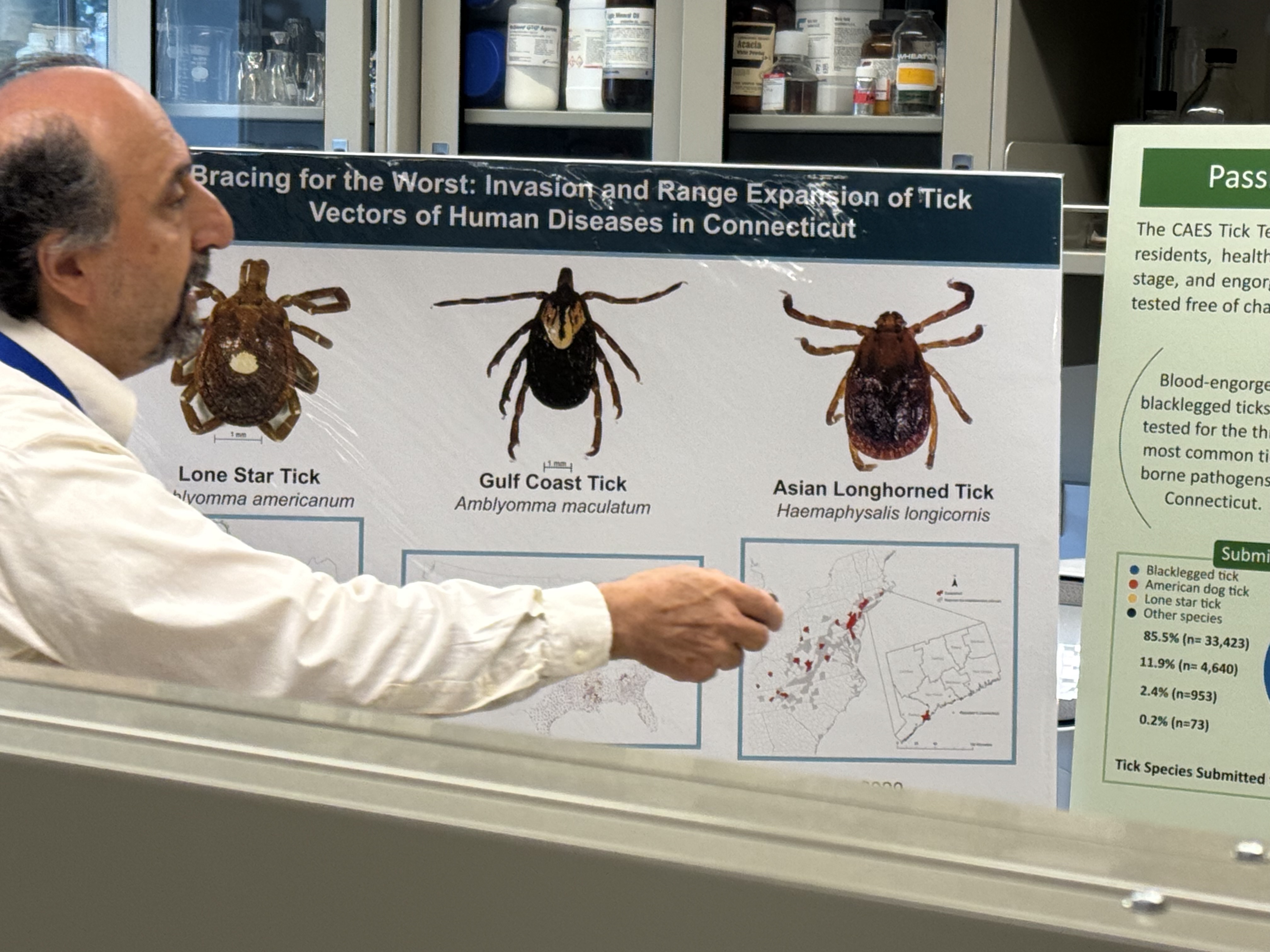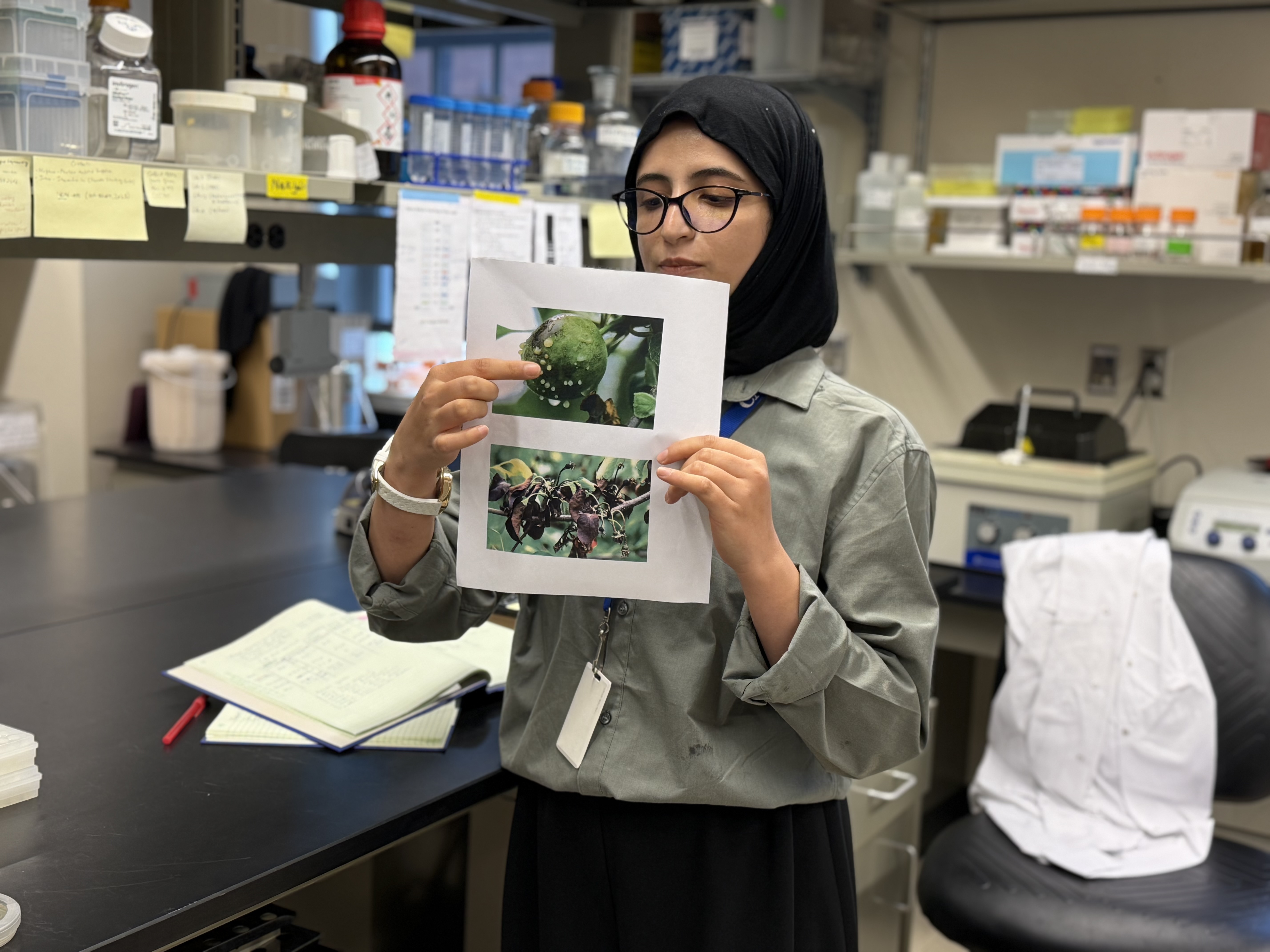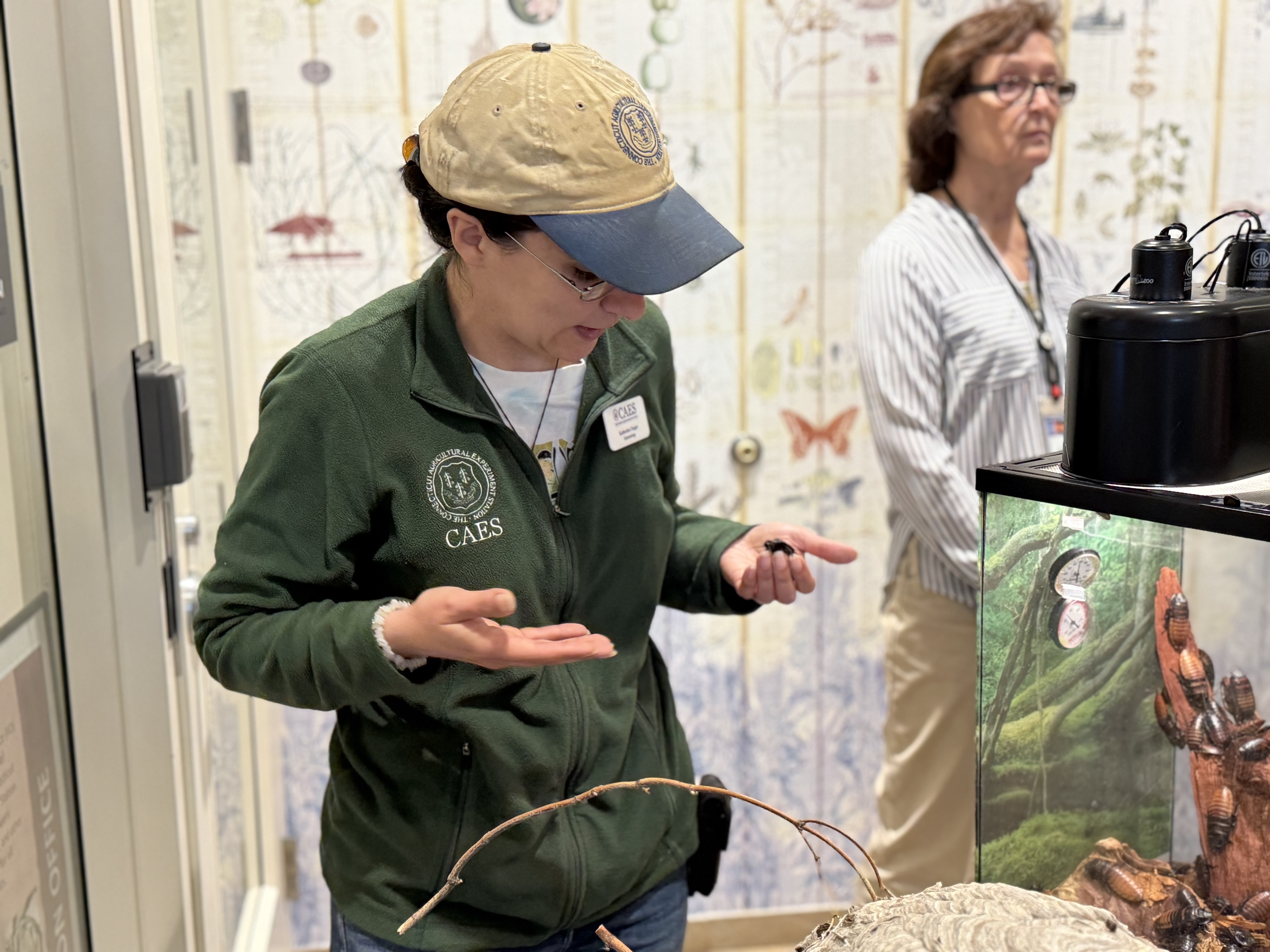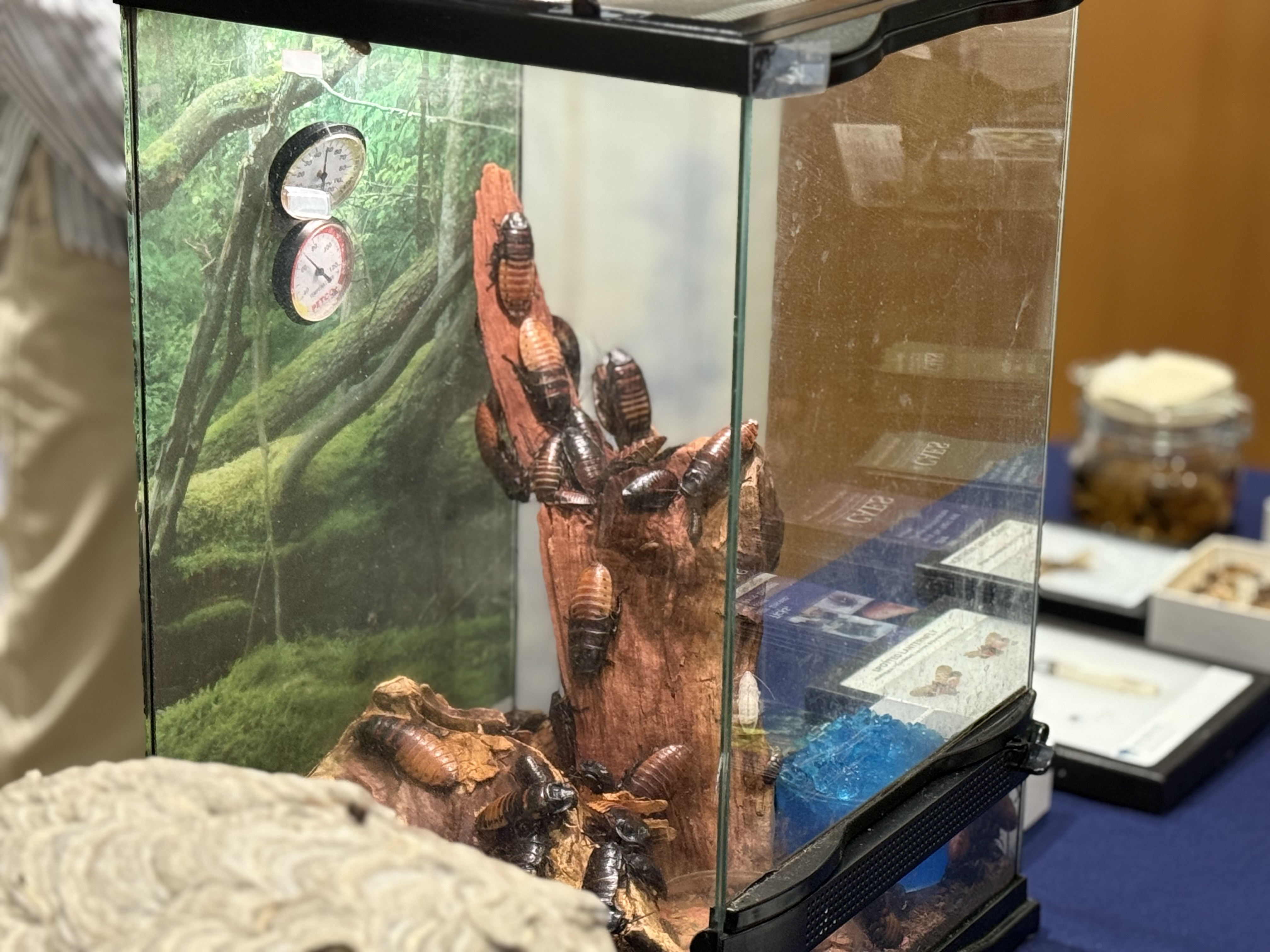
Adam Walker Photos
Dr. Goudarz Molaei explains the risk of ticks across CT.
A tick takeover — fueled by climate change and an invasive new species — stole the spotlight Thursday as the Connecticut Agricultural Experiment Station marked 150 years of science, service, and now, swarm warnings.
The event, part of the Arts & Ideas festival, drew about 40 attendees who split into two groups to visit labs and historic buildings at the nation’s first agricultural experiment station.
CAES Tick Testing Laboratory director Dr. Goudarz Molaei noted a striking rise in tick submissions, explaining that while the lab, founded in 1999, typically received about 3,000 ticks annually from Connecticut residents, that number has nearly doubled to 6,000 in recent years due to climate change and shifting environmental conditions.
“We can see ticks, examine them under a microscope to determine what species they are,” he said. “Currently we have about 15 different species in our state; however, we have five of them to be of significant importance to public health.”
Most concerning, Molaei said, is the rise of the Asian longhorned tick, which he described as “a kind of real beast” because of its ability to reproduce and spread rapidly. This invasive species, now established in Fairfield and New Haven counties, can produce massive populations in infested areas.
Molaei described the Asian longhorned tick as a reproductive powerhouse, noting that a single female can produce 2,000 to 3,000 eggs without needing a mate, fueling rapid population growth. In areas where these ticks are established, he said, it can take just about 10 minutes outside — even while fully covered — for someone to pick up hundreds of ticks.
Until recently, the longhorned tick was not known to transmit disease in Connecticut. That changed last month, when CAES researchers published a study documenting for the first time the presence of disease-causing pathogens in local longhorned ticks. Molaei emphasized that the tick’s rapid spread, combined with its ability to carry pathogens, presents a growing public health threat.
The tour commemorated CAES’s founding in 1875, inspired by Yale professor Samuel William Johnson’s vision of unbiased, publicly funded agricultural science. Attendees learned about the station’s early work testing fertilizers and feeds for fraud, and its major contributions to science — including the discovery of Vitamin A and the invention of hybrid corn.
CAES leaders detailed the station’s ongoing role in safeguarding public health and agriculture through research on plant diseases, mosquito-borne viruses, pesticide residues, and more.
Stops on the tour included the Biosafety Level 3 lab, where staff monitor mosquitoes for viruses like West Nile and Eastern Equine Encephalitis using advanced cell culture and PCR testing; the analytical chemistry lab, where scientists analyze animal feed, fertilizer, and pesticide residue to ensure safety and compliance; and the Plant Pathology lab, where researchers are working on sustainable ways to combat fire blight in apples.
Scientists described their search for natural resistance within apple varieties — highlighting a particular New York species of apple that shows no symptoms when exposed to the fire blight bacterium — and their efforts to identify the genetic and biochemical traits responsible for this resistance.
The ultimate goal: to breed or engineer apple trees that can resist fire blight without antibiotics or copper sprays, thereby reducing grower costs and enabling more organic apple production. Researchers also discussed testing biocontrol agents like protective yeasts that help trigger the apple tree’s natural immune response to prevent infection.
Other highlights included a rare glimpse of century-old temperature records preserved on hand-colored charts, documenting Connecticut’s steadily warming winters from 1875 to today; a chance to handle live hissing cockroaches and view preserved insect specimens, including a massive elephant dung beetle; and displays on native wasps, hornet nests, and the history of pest management.
Visitors learned how social insects like hornets collaborate to build intricate paper nests and how researchers at CAES track and identify invasive species like the spotted lanternfly.
The station will continue its anniversary celebrations with Plant Science Day on Aug. 6 at its Hamden research farm, featuring additional tours, children’s activities, and talks by scientists.

Student explains her research on apple trees.

Katherine Dugas discusses the Madagascar hissing cockroach.

Angela Bransfield explains how the Biosafety Level 3 lab tests mosquitoes for viruses.
